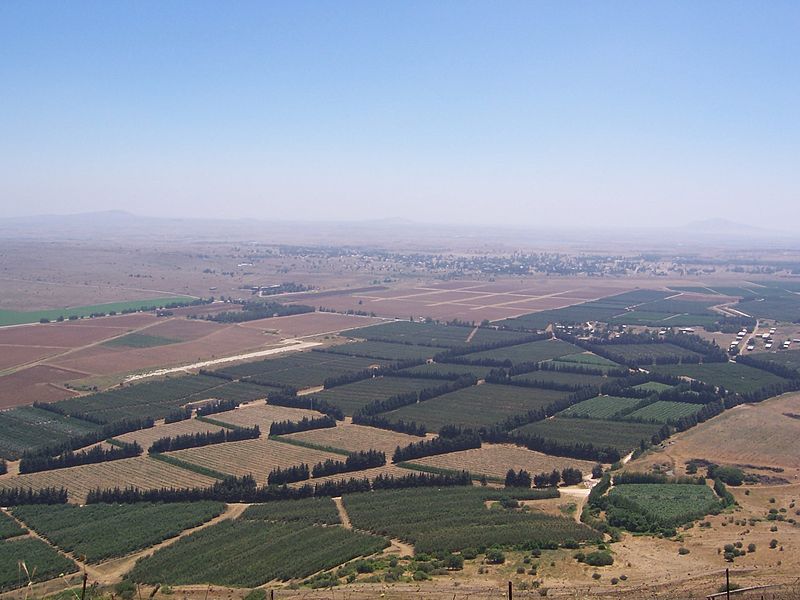Prime Minister Benjamin Netanyahu has made a public declaration of Israel’s interest in having the United States recognize Israeli sovereignty over the Golan Heights. Senators Tom Cotton and Ted Cruz have introduced legislation urging just that.
Why now?
There is no “peace process” – certainly none that involves Syria – and little push in international circles to force Israel to cede the territory to the war criminal Bashar Assad. The U.S. has even taken a stand against the annual U.N. resolution condemning Israel’s presence on the Golan, calling it “useless” and “plainly biased.” Is it possible that someone, somewhere, thinks that as the Syrian civil war calcifies and the players jockey for new semi-permanent positions, this is a good time to “settle” the Golan as well?
Well, yes. The prime minister.
Two things are worth understanding: U.N. Resolution 242 and Israel’s “right to exist.”
Among those opposed to recognition of Israel’s sovereignty on the Golan are some notable friends of Israel – including former U.S. ambassador Daniel Shapiro – who believe that under the terms of UNSCR 242, Israel is required to give up the Golan at some point (not now, Shapiro says adamantly) because countries cannot acquire territory by force. That is incorrect. The text says, “Emphasizing the inadmissibility of the acquisition of territory by war…”
War, not force, and the difference is meaningful.
It was the Arab states that went to war in 1967; Israel acquired the territory in self-defense. To say territory acquired through defense has to be returned to the aggressors would suggest that the Arabs could go to war and lose territory (which they did) but then return to status quo ante and try again later, rendering defense temporary at best. The U.N. understood that, mandating that territorial adjustment for Israel would include:
… [t]ermination of all claims or states of belligerency and respect for and acknowledgment of the sovereignty, territorial integrity and political independence of every State in the area and their right to live in peace within secure and recognized boundaries free from threats or acts of force.
Arabs first, since Israel maintained no state of war against any Arab country. It was only when Anwar Sadat acknowledged the requirement by appearing in Israel’s Knesset that peace was possible and Sadat’s demand for “every grain of sand in Sinai” was met. Sinai was 93% of the “territories occupied in the recent conflict,” leading the late Eugene Rostow – a chief architect of the resolution – to say Israel had complied with it whether it returned “all, some, or none” of the remaining territory to Arab control.
“Secure and recognized boundaries” is a reference to the fact that the 1948 borders were neither of those things and would have to be fixed.
This leads directly to the second point.
It is frequently said by people meaning to defend the State of Israel that they accept “Israel’s right to exist, but not…” whatever. Who asks permission to “exist”? Did the United States ask King George?
The restoration of part of the Jewish people to part of its historic, indigenous territory did not need ratification by the League of Nations or the U.N. Jews lived there from the beginning – sometimes only a remnant, and after 70 C.E. under various occupations, and in increasing numbers beginning in the 19th century. Its capital was never anyone else’s capital. To be a modern, independent state, however, the Jewish people accepted the international standards of the 20th century – the Balfour Declaration, with an endorsement by the U.S. Congress in 1922, the League of Nations, and the United Nations – in support of its sovereign status.
That’s it. The fact that the Arab States not only did not accept those standards, but went to war more than once to turn the clock back has nothing to do with anything.
As we mourn the passing of Moshe Arens — Israeli patriot and diplomat, defense minister and aeronautical engineer, we quote him. “According to the second law of thermodynamics there are no reversible processes in nature. Nothing can return exactly to its original state. This law may not hold in international relations, but the exceptions are few and far between.”
The U.N. may have a better chance of reversing the laws of thermodynamics than of bringing Syria to accept its obligations under U.N. Resolution 242.
But in 1967, the U.N. was smarter than that. Resolution 242 did not confirm some nebulous “right to exist” for Israel; that was established. It didn’t even call for “peace” as its ultimate aim. Instead, it required “a just and lasting peace in which every State in the area can live in security.” Peace was the condition that would provide security – and security for a sovereign Israel was the endgame.
How long is Israel required to wait? It has been almost 52 years since Syria lost the Golan Heights as a result of aggression from that space that began before the independence of Israel. It is 45 years since Israel repulsed the aggression of the Yom Kippur War.
It is appropriate for the world to ratify Israel’s right, not to minimal or shaky “existence,” but rather to “secure and recognized boundaries free from threats or acts of force” on the Golan.
Republished from San Diego Jewish World


























